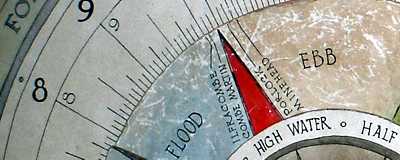
![]()
Does old geospatial data have value? Is new geodata better? Project needs change and the spatially related questions being asked may be different, requiring new data. When is the best time to collect spatial data and what are some of the considerations involved? Does one approach over another have particular advantages when comes to planning and data collection?
![]()
Does old geospatial data have value? Is new geodata better? Project needs change and the spatially related questions being asked may be different, requiring new data. When is the best time to collect spatial data and what are some of the considerations involved? Does one approach over another have particular advantages when comes to planning and data collection?
 Stop. Before one plans or begins to collect new geospatial data for any project, they owe it to themselves, and their budget, to find out what geospatial data already exists within an organisation.
Stop. Before one plans or begins to collect new geospatial data for any project, they owe it to themselves, and their budget, to find out what geospatial data already exists within an organisation.
With an assessment of the data archives, several important pieces of information are suddenly available.
New GNSS technologies bring higher accuracy’s than previous instruments, thus warranting a re-think of data holdings and whether or not applications are being properly supported with the correct location and navigation data.
The whole area of building information modeling (BIM) has particularly sparked a revolution in data creation, design use and collaborative sharing. Standards support this wider adoption, but changes involving how design teams and collaborators come together also set the foundational elements for improved inter-connection.
Can the older data participate in new participation oriented BIM networks? Is it easier and more efficient to transfer paper design drawings through scanning, or easier to re-collect the information using digital tools for as-builts?
A summary of existing data holdings is a solid first step for beginning any project. This will necessarily involve consideration of re-usability of the older data. In some cases the data may be set aside, in other cases it can be adapted and integrated into current projects and applications.
Care needs to be taken for aerial imagery in particular, since change over time is what drives many business models and needs. A technological summary of the ability to capture new data needs to be made, and the cost of purchasing technology and performing the work must be understood.
Each case is different as might be expected. And there can be many surprises.